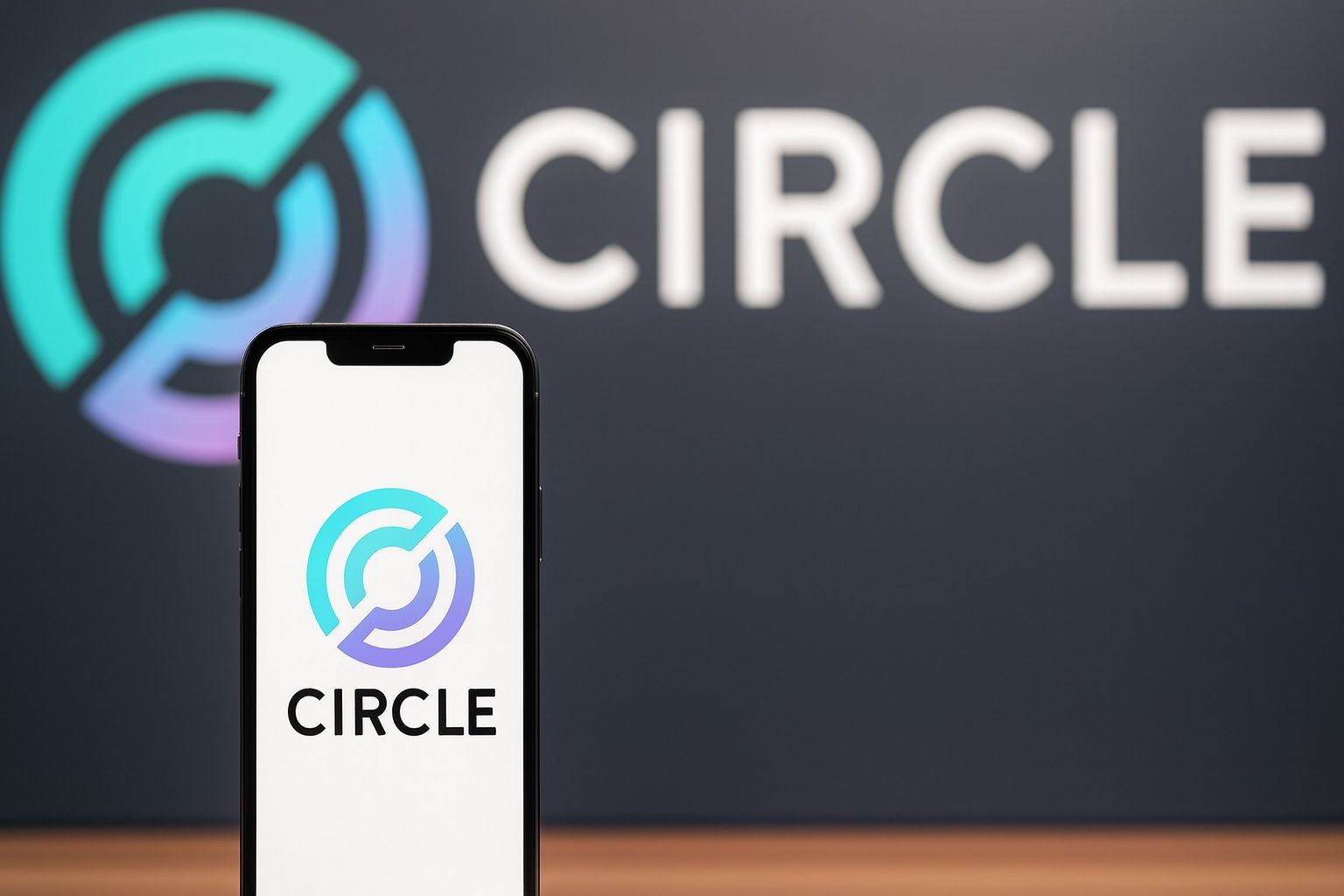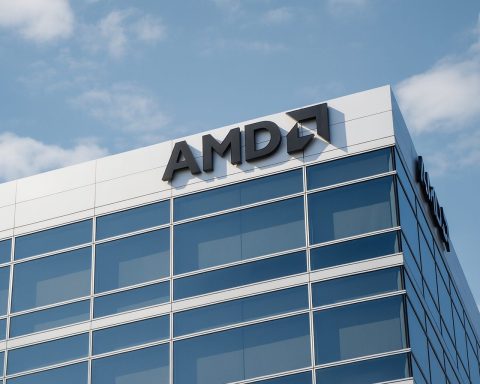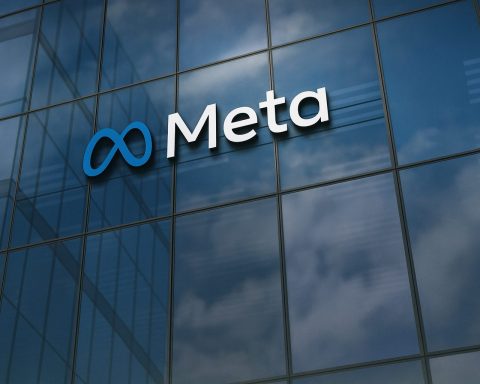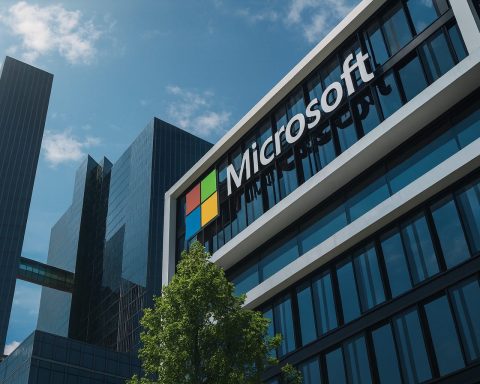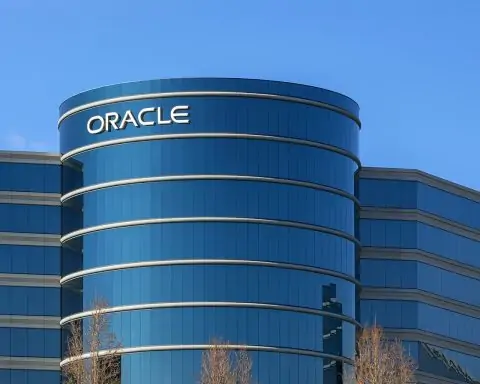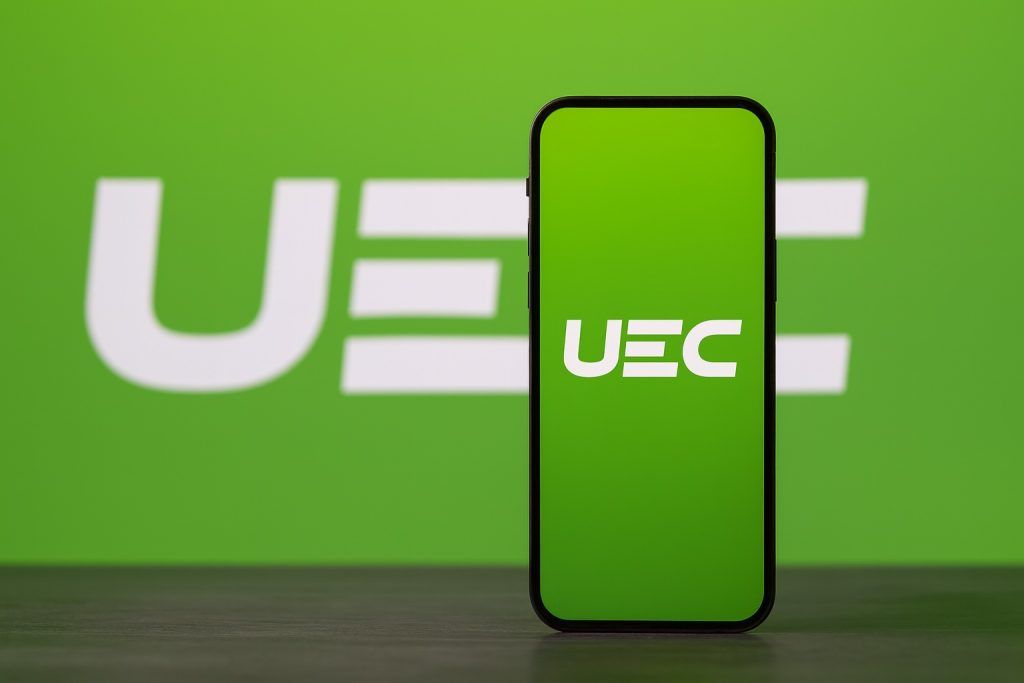- Stablecoin Powerhouse: Circle Internet Group (NYSE: CRCL) is a fintech firm behind the major stablecoins USD Coin (USDC) and Euro Coin (EURC), making it the world’s second-largest stablecoin issuer (USDC’s market cap is about $73 billion) [1] [2]. The company operates a platform and payment network for blockchain-based digital currency transactions.
- Stunning IPO Surge: Circle went public in June 2025 at $31 per share and saw a spectacular 750% surge within weeks amid a wave of crypto enthusiasm and new U.S. legislation favoring stablecoins [3]. Its stock opened at $69 and closed the first day at $83 [4], then skyrocketed to an intraday high near $299 by late June [5]. This marked one of the biggest post-IPO rallies in decades.
- Volatile Stock Performance: After peaking in mid-2025, CRCL shares pulled back sharply. The stock hit an all-time high close of ~$263 in late June [6], then dropped to around $110 by early September amid profit-taking and broader market choppiness. It rebounded on positive news to the mid-$150s in early October, before falling 11.7% in one day on Oct 10 (closing around $132.80) [7]. Circle’s current market capitalization is roughly $34 billion [8], with shares still up ~330% from the IPO price but ~55% below their peak.
- Financials – Growth vs Losses: Circle’s revenue has ballooned thanks to interest earned on its stablecoin reserves. In Q2 2025, it reported revenue of $1.67 billion (up ~53% year-on-year) [9] [10]. However, aggressive expansion costs drove a net loss of about -$482 million for the quarter [11]. The company’s balance sheet is massive – ~$64 billion in assets (mostly the cash and Treasuries backing USDC) vs relatively low debt (~$450 million long-term) [12] [13] – indicating strong liquidity. Notably, despite net losses, Circle managed a positive free cash flow of $240 million in the first half, due to high interest income [14].
- Strategic Partnerships & Expansion: Circle has inked high-profile partnerships to drive adoption of its stablecoins. In late September, it announced a collaboration with Kraken to boost USDC/EURC trading on the exchange [15]. It also signed an MOU with Deutsche Börse, aiming to integrate USDC/EURC into European market infrastructure [16] [17]. The company launched its own Layer-1 blockchain, “Arc,” in August to improve stablecoin settlement for banks and businesses [18]. These moves are part of Circle’s strategy to make USDC “the money rail of the internet” – positioning stablecoins for mainstream finance [19].
- Analyst Sentiment – Mixed Outlook: Wall Street’s view on CRCL is divided. Bullish analysts (e.g. at Citi and Bernstein) see Circle as a leader of a potentially trillion-dollar market, with optimistic price targets from $230 up to $247 [20] [21]. Cautious voices highlight risks – Goldman Sachs initiated coverage at a mere $83 target (Neutral) [22], and Weiss Ratings recently reiterated a “Sell (D)” rating citing the stock’s lofty valuation and insider selling [23]. Overall, Circle has a consensus Hold rating with price targets averaging ~$165 [24] [25], reflecting its high growth potential tempered by regulatory and profitability concerns.
Recent Developments & News (October 2025)
October 2025 has been eventful for Circle, with major partnership news and stock volatility grabbing headlines. On Sept 30, Circle revealed a collaboration with Deutsche Börse, one of the world’s largest market infrastructure providers, to integrate its stablecoins into traditional capital markets [26]. This deal will explore listing USDC/EURC on Deutsche Börse’s trading platforms and using Circle’s coins in settlement and custody via the exchange’s networks [27]. Around the same time, Circle announced fintech firms Arf and Huma joined its Circle Payments Network to offer credit and liquidity services in USDC [28] – part of Circle’s push to increase stablecoin utility in global payments.
The stock market reacted strongly to these developments. On Oct 2, CRCL stock spiked 17.7% in a single day after news of the partnerships fueled investor optimism [29] [30]. Shares jumped from the low-$130s to around $150 on heavy volume, as traders bet that Circle’s expanding ecosystem will translate into higher stablecoin usage and revenue. “Circle Internet Group Inc.’s stock surged 17.7% after a major partnership announcement fueled investor optimism,” noted StocksToTrade in a market brief [31]. This rally showed how sensitive CRCL is to news flow – especially anything touching on adoption of USDC or new regulatory tailwinds.
However, the exuberance was short-lived. By Oct 8-10, broader market jitters and some profit-taking hit crypto-related stocks. On Friday Oct 10, Circle’s share price tumbled 11.7% to close at $132.80 [32]. Nearly 19.2 million shares changed hands that day (slightly above typical volume), as traders reacted to a mix of factors: a general tech stock selloff, crypto market volatility, and perhaps nerves ahead of upcoming legislation votes. It’s worth noting the overall stock market was down on Oct 10 – the Dow fell sharply amid renewed U.S.-China trade tensions, which also dragged crypto prices lower [33] [34]. Circle was not spared by this risk-off sentiment. Despite the pullback, the stock’s week-to-week trend remains upward; CRCL had closed at $150.48 just the day before (Oct 9) [35], meaning the late-week drop brought it back to roughly where it traded in mid-September.
In other news, analyst coverage of Circle intensified in early October. On Oct 3, Rothschild & Co’s Redburn unit initiated coverage with a Neutral rating and $136 price target [36] [37], basically calling the stock fairly valued after its big swings. A few days later on Oct 8, research firm Weiss Ratings went the opposite direction, reiterating a “Sell (D)” rating for Circle [38]. Weiss cited caution about the company’s near-term performance and noted significant insider selling by top executives (including CEO Jeremy Allaire) during the summer rally [39] [40]. These mixed messages – new partnerships vs. insider sales and cautious ratings – contributed to the stock’s choppiness as of Oct 11, 2025.
Meanwhile, Circle’s management made a small governance change: long-time board advisor David Orfao announced his resignation from the board in early October [41]. The move was described as amicable and unrelated to company strategy. Circle has been staffing up its advisory ranks with seasoned finance executives, so turnover isn’t surprising for a young public company adapting its board composition.
Looking ahead, investors are anxiously watching Washington, D.C. for the next regulatory catalyst. The stablecoin bill (the “GENIUS Act”) that turbocharged Circle’s stock in June passed the Senate but is still awaiting a House vote [42] [43]. Any progress (or setbacks) on that legislation could spur significant moves in CRCL. For instance, when the Senate approved the bill in June, Circle’s stock leapt 33.8% in one day [44]. As of October, the market is eyeing whether the House will take up the bill by year-end. Circle’s CEO Jeremy Allaire has been vocal on this front – after the Senate vote, he tweeted that “history is being made” and argued the stablecoin law will boost U.S. competitiveness in digital finance [45]. Another regulatory win could very well ignite the next leg up for Circle’s stock; conversely, delays or political pushback might dampen the optimism. In short, October’s news cycle – partnerships, analyst opinions, and regulatory watch – encapsulates Circle’s dual reality: rapid innovation and opportunity on one hand, tempered by volatility and uncertainty on the other.
Stock Price History & Technical Analysis
Trend & Momentum: Circle’s stock trajectory since its June IPO can only be described as a rollercoaster. The early rally was meteoric – from $31 IPO price to over $250 in under a month – followed by steep corrections. The 52-week trading range is $64.00 (low) to $298.99 (high) [46], reflecting the wide swings in valuation as the market reassessed Circle’s prospects. Over the past six months, CRCL did settle into somewhat of a range, though a volatile one: roughly $120 on the low end and $160–$170 on the high end through late Q3. By Oct 11, shares trade around the mid-$130s, smack in the middle of that range. The 50-day simple moving average is about ~$138 (versus the current price just below that) [47], indicating the stock is marginally below its recent average – a sign that momentum cooled after the early October pop and subsequent pullback. There isn’t yet a 200-day average to consider (the stock hasn’t traded for 200 days since IPO), but the shorter-term trend suggests consolidation. After a series of lower highs from July through September, CRCL attempted to break that pattern with the October rally to ~$157, but the failure to hold above $150 and the quick drop back to $130 indicates continuing volatility rather than a decisive new uptrend.
Volume & Volatility: Trading volumes in CRCL have been elevated during news events. The stock’s average daily volume is around 20 million shares [48], which is quite high for a newly public company – reflecting intense trader interest. On big news days, volume has spiked even higher (e.g. over 22 million shares on Oct 10 during the sell-off) [49]. The high volume on declines and on rallies alike points to active trading by both institutional players and retail investors. Technically, Circle’s stock has a beta well above 1 (informally estimated, given its outsized moves against the market), so it’s a high-volatility play. Options markets also imply hefty swings; for instance, one-day moves of ±10% have occurred multiple times since June. Traders should be prepared for wide bid-ask spreads and rapid intraday price changes in this stock.
Support & Resistance Levels: With such a short trading history, support/resistance zones are still forming. In recent weeks, the $125–$130 area emerged as a support floor – the stock bounced off lows in this range several times (late September and again with the Oct 10 drop closing just above $132) [50] [51]. If that zone fails, the next support might be around $110 (the early September lows) which was where bargain hunters stepped in previously. On the upside, the $155–$160 level appears to be immediate resistance. CRCL briefly pierced $155 in early October but was unable to close above it [52]. A sustained break past $160 would be technically bullish, potentially opening the way to the next psychological level around $200. However, given the stock’s sensitivity to news, technical levels can be swiftly overrun by fundamental catalysts. The relative strength index (RSI) for CRCL has whipsawed along with price; it entered October at neutral levels, spiked to overbought during the Oct 2–3 surge, and then eased back after the pullback. Overall, technical indicators show a stock trying to find equilibrium after extraordinary swings – short-term traders are dominating, while longer-term investors are attempting to discern a stable trend.
In summary, Circle’s chart paints the picture of a high-beta, momentum-driven stock. Key technical takeaways: the stock is mid-range between its extremes, has tentative support around $125, near-term resistance around $155+, and continues to be news-driven. Cautious investors may wait for a clearer trend (or a breakout above resistance) before jumping in, whereas active traders are capitalizing on the frequent volatility. As always, risk management is crucial – stop-loss orders and position sizing matter when a single headline can move the stock double-digits in a day.
Fundamentals & Financial Analysis
Circle’s fundamental profile is unusual for a newly public tech firm: explosive revenue growth, large reserves, and persistent losses, all at significant scale. The company’s core business is issuing fully reserved stablecoins – essentially managing tens of billions in customer dollar deposits (reserves) and earning interest on those reserves. This model has led to robust top-line growth. In its first public earnings report (Q2 2025), Circle posted $658 million in quarterly revenue, up 53% from the prior year [53]. The bulk of this comes from interest income on the U.S. Treasury bills and cash that back USDC. In fact, over 90% of Circle’s revenue comes from interest on reserves, as noted in its IPO filings [54]. With U.S. interest rates relatively high in 2025, this has been a lucrative income stream – essentially, higher Fed rates directly boost Circle’s earnings on the ~$63 billion they hold in reserve assets.
Despite strong revenues, Circle is not yet profitable. The Q2 net loss was about -$4.48 per share (≈$482 million), a far cry from the modest positive EPS analysts had expected [55] [56]. The loss reflects heavy expenses: Circle is reinvesting in growth initiatives (like new products, global expansion, R&D) and also paying out sizeable yields to partners. Notably, Circle shares a portion of its reserve interest income with ecosystem partners (such as Coinbase, which co-founded USDC); these distribution costs accounted for roughly 60% of its interest income in recent periods [57]. One silver lining is that Circle’s operations are cash-generative even while reporting accounting losses – the company had +$240 million in free cash flow in the first half of 2025 [58]. This is possible because certain non-cash expenses and investments (and timing of interest payments) mean not all “loss” is cash out the door. Still, the trend is clear: Circle needs to eventually trim its losses or grow into profitability by scaling revenue faster than expenses.
On the balance sheet, Circle looks more like a bank than a typical tech startup. It held $64.2 billion in total assets as of mid-2025, against $63.1 billion in total liabilities [59]. The assets are predominantly the safe, liquid investments backing USDC (short-term Treasuries, cash, etc.), while the liabilities are the USDC tokens in circulation (which are effectively IOUs to holders). This means Circle’s liquidity position is very strong – over 98% of assets are in cash or cash equivalents [60]. The company carries only modest long-term debt (around $450 million) [61], likely related to lease obligations or a small credit facility. With equity capital boosted by the IPO proceeds ($1.05 billion raised [62]) and a subsequent follow-on stock offering of $1.3 billion in August [63], Circle has ample capital to fund operations. Its capital ratio (equity over assets) is thin in percentage terms (as is normal for a stablecoin issuer keeping most assets as reserves), but regulators and investors will focus on the quality and liquidity of those reserves – which by all accounts are very high quality (all in USD cash and Treasuries, with monthly attestations).
A key aspect of Circle’s fundamentals is its market share and competitive position in the stablecoin space. USDC is currently the second-largest stablecoin globally (trailing only Tether’s USDT) and holds roughly 25% of the total stablecoin market by supply [64]. Circle’s management often highlights that stablecoins, while growing fast, still represent only about 1–1.2% of the U.S. money supply [65] [66]. This suggests a massive addressable market if even a fraction of conventional money moves onto blockchain rails. By cementing partnerships with traditional finance (like the Fiserv deal to integrate USDC with bank payment networks [67], or the Visa pilot to settle transactions in USDC), Circle is trying to drive adoption beyond the crypto trading use case. The launch of Euro Coin (EURC) further indicates its ambition to capture international stablecoin markets, positioning Circle as a multi-currency digital issuer for the future.
It’s also important to consider cost structure and risks. Circle’s profitability is highly leveraged to interest rates – a double-edged sword. In 2025, high rates are boosting revenue dramatically (hence the 53% YoY jump), but if the Fed cuts rates in 2026 or beyond, that tailwind could reverse. Analysts point out that a large portion of Circle’s revenue could evaporate if, say, the yield on reserves falls from ~5% to 1% in a low-rate environment [68]. Circle is attempting to build out alternative revenue streams (transaction fees, API services for its platform, etc.), but currently interest yield is king. Another major expense is the cost of maintaining USDC’s peg and ecosystem incentives – Circle pays partners like Coinbase a revenue share to promote and use USDC, and it invests in compliance and security to ensure USDC remains fully trusted. These costs are necessary to defend its market share against rivals (not just Tether, but also newer entrants like PayPal’s PYUSD and potentially even central bank digital currencies in the future).
From a fundamental perspective, investors must balance growth vs. margin. Circle’s top-line could continue to grow rapidly if stablecoin adoption accelerates (through new use cases like cross-border payments, DeFi, gaming, etc.). The company is already showing operating leverage in some areas – for example, it added billions in reserves in 2025 without a proportional rise in operating costs, indicating scalability. Yet the bottom-line will remain under pressure until either interest income increases further or expenses (including distribution deals) are pared down. The path to consistent profitability likely involves a combination of higher USDC volumes (so that even with lower yields, the reserve base is larger) and lower pay-outs or costs per $ of asset (improving efficiency). As of October 2025, Circle’s P/E ratio is deeply negative [69], so traditional valuation metrics are less applicable; many analysts value it on price-to-sales or consider the growth narrative.
In summary, Circle’s fundamentals reflect a high-growth fintech in expansion mode. Revenues are soaring (directly tied to USDC’s success and interest rates), the balance sheet is huge and liquid (inherently safe assets backing every token), and losses are sizable but arguably strategic. The next few earnings releases will be closely watched to see if losses narrow and how reserve growth tracks. Investors are essentially betting that Circle can turn its early stablecoin dominance into a sustainably profitable enterprise – a bet that hinges on both macro factors (interest rates, regulation) and execution (driving adoption while managing costs).
Market Position & Strategic Initiatives
Circle’s business sits at the intersection of crypto and traditional finance, and the company has been aggressively pursuing initiatives to strengthen its position. A core part of Circle’s strategy is partnership-driven growth – leveraging established players to accelerate USDC adoption. We’ve already noted the Kraken and Deutsche Börse partnerships which expand Circle’s reach in crypto trading and European markets. Additionally, Circle earlier partnered with Fiserv (a major payments processor) in mid-2025 to integrate USDC payments for banks and merchants [70]. Such tie-ups are crucial: they effectively piggyback on existing financial networks to promote stablecoin usage for things like remittances, corporate treasury, and settlement. As a result, Circle gains legitimacy and access to users who might not otherwise interact with crypto directly.
Another significant strategic play is the Circle Payments Network (CPN). Announced in 2025, CPN is Circle’s answer to a global settlement layer – it allows institutions to settle dollar payments instantly using USDC. At a recent conference, Circle touted new members (including fintech lenders like Arf and Huma) joining CPN to offer on-demand credit in USDC [71]. This is innovative: by using USDC on CPN, businesses could reduce the need for pre-funded accounts in different countries, since the stablecoin can be sent in real time to wherever liquidity is needed. If CPN gains traction, it could encroach on traditional cross-border payment systems (like SWIFT) for certain use cases, offering faster speed and lower cost. Circle’s advantage here is being early and regulated – it is positioning USDC as a compliant bridge between crypto and bank money. CEO Jeremy Allaire frequently emphasizes working “within the regulatory perimeter,” noting that Circle was the first stablecoin issuer to comply with Europe’s new MiCA rules [72] [73]. This compliance focus is a strategic moat; it gives large institutions confidence to partner with Circle rather than unregulated rivals.
The launch of Arc, Circle’s own stablecoin-focused blockchain, is another prong in the strategy [74]. Arc is a dedicated Layer-1 network optimized for stablecoin transactions and smart contracts involving digital currencies. Why would Circle need its own chain when USDC already runs on many existing blockchains (Ethereum, Solana, etc.)? The answer likely lies in performance and control. Arc is designed to be high-speed and extremely energy-efficient (far greener than Bitcoin, aligning with environmental goals) [75]. By controlling the chain’s development, Circle can tailor it to large-scale financial use – for example, building in compliance features, identity, and instant finality that big institutions desire. If Arc succeeds, Circle could capture some of the value that currently flows to third-party blockchains when USDC is used. It could also mitigate the risk that a given blockchain (say Ethereum) gets congested or too expensive; Arc provides an alternative rail for USDC transactions under Circle’s stewardship.
One cannot examine Circle’s position without discussing competition. The stablecoin arena is dominated by Tether’s USDT, which still has a larger share (~58% of the $300B market) [76] [77]. Tether has years of first-mover advantage and deep integration in crypto trading. However, Circle is widely seen as the more transparent and regulated player, which is attractive to institutions. A Reuters analysis in June noted that once U.S. law is in place, stablecoins could become “the preferred money rail of the internet” and Circle is in pole position to capitalize [78]. That said, competition is heating up: PayPal launched its own USD stablecoin in August, Facebook/Meta had earlier stablecoin ambitions (Diem, now defunct), and even central banks are considering digital currencies (CBDCs) that could one day coexist or compete with private stablecoins. Circle’s response has been to welcome regulation (as an opportunity to solidify trust in USDC) and to expand globally so it’s not reliant on any single market. For instance, Circle is developing Asian market strategies (hosting events in Singapore, partnering with regional firms) and eyeing growth in remittance corridors.
One interesting angle is Circle’s role in other blockchain sectors beyond payments. Circle has dipped into supporting tokenized assets – e.g. working with projects that tokenize carbon credits for climate finance. In fact, analysts at CarbonCredits.com highlighted that “Circle Internet Group (NYSE: CRCL)… plays a pivotal role” in tokenizing carbon markets, using USDC as the stable unit for trading carbon credits on-chain. By enabling these new markets (carbon trading, perhaps tokenized securities in the future), Circle is broadening the use cases for USDC. Each new use case potentially drives demand for the stablecoin and deepens Circle’s integration into the infrastructure of digital finance.
In summary, Circle’s market position is that of a front-runner in the regulated stablecoin race. Its strategy centers on scaling adoption through partnerships, building proprietary tech (Arc, CPN), and maintaining trust via transparency and compliance. If stablecoins indeed “cross the chasm” into mainstream finance, Circle’s moves in 2025 may have laid the groundwork for USDC to be a dominant digital dollar. The company’s focus now is on execution – rolling out these initiatives successfully before competitors catch up or new ones emerge. As Bernstein’s research team put it, in the coming digital currency era there may be winners-take-most dynamics [79]. Circle’s flurry of activity is about ensuring USDC is among those winners, securing a large share of the multi-trillion dollar opportunity that could unfold in digital payments and beyond.
Investor Sentiment & Expert Commentary
Market sentiment on CRCL stock is a tale of two narratives: excitement about its growth potential and partnerships, versus caution about its valuation and risks. Many industry experts are enthused by Circle’s prospects, often framing stablecoins as a transformative innovation. For example, analysts at Bernstein Research have argued that once clear U.S. regulations are in place, stablecoins like USDC could become “the money rail of the internet,” moving from a niche crypto product to a backbone of global finance [80]. This extremely bullish view underpins Bernstein’s Outperform rating and high price target (~$230) for CRCL [81]. Similarly, Citi’s analysts initiated coverage in mid-2025 with a Buy rating and a ~$243 target, citing Circle as a “leading enabler of stablecoin adoption” poised to ride a massive secular trend [82] [83].
Proponents often point to the sheer scale of the opportunity. Stablecoins in circulation are only about 1% of U.S. M2 money supply today [84]. Even capturing a few more percentage points of global transactions (remittances, e-commerce, B2B payments) could imply multi-fold growth for USDC usage. “Stablecoin volume is only ~1.2% of the US money supply, which implies tremendous runway,” noted a recent report by Redburn (Rothschild & Co) [85]. Bulls also highlight Circle’s first-mover advantage in compliance. When the U.S. Senate passed the stablecoin bill in June, Zacks’ analyst Andrew Rocco commented that the legislation “can accelerate [stablecoin] demand” by giving mainstream institutions confidence to use them [86]. Circle, having already structured USDC to be fully reserved and audited, stands to benefit disproportionately from such legitimacy.
On the other hand, skeptics and bears urge caution, emphasizing that Circle’s current financial performance doesn’t justify its lofty stock price. Even after the pullback to ~$130s, Circle trades at a rich multiple of its revenue (over 10x forward sales, by some estimates). As noted earlier, the company is losing money and the timeline to profitability is uncertain. Goldman Sachs analysts, for instance, assumed coverage with a Neutral stance and a $83 price target, the lowest on the street [87]. They likely see the stock as overextended relative to fundamentals, especially given competition from non-public players like Tether who aren’t as constrained by public-market pressures.
Investment research firm Weiss Ratings went further, slapping a “D” (Sell) rating on CRCL in October [88]. They point out that a number of insiders sold shares after the IPO pop – notably, CEO Jeremy Allaire sold ~$45 million worth in August around $127/share [89], and a board director (Rajeev Date) also sold a chunk, together totaling over $49 million in insider sales last quarter [90]. While insiders may sell for many reasons (diversification, pre-planned sales, etc.), such large sales early in the company’s public life made some investors uneasy. Weiss’s cautious stance reflects a view that execution risks are significant: Circle must not only grow fast, but also fend off heavy competition and manage regulatory scrutiny, all while eventually turning a profit in a potentially lower-rate environment. That’s a tall order, and some analysts prefer to wait until there’s proof of sustainable earnings before recommending the stock.
Balanced voices see both promise and pitfalls. One equity strategist quipped that Circle “is riding a rocket – thrilling but with the potential for a hard landing”. The consensus rating of Hold encapsulates this middle ground [91] [92]: most analysts aren’t screaming “buy” after the stock already ran up dramatically, but they’re also not outright bearish given Circle’s strong market position. Instead, they’re in “show me” mode – looking for upcoming quarterly results to demonstrate that losses are narrowing or that USDC circulation is still climbing post-IPO. It’s worth noting that despite recent volatility, sentiment in the crypto community remains upbeat on Circle. On social media and forums, many crypto investors view Circle as a key bridge between crypto and traditional finance, and they support the company for pushing pro-crypto legislation. However, generalist stock investors are more divided, often grouping CRCL with other high-volatility fintech or crypto plays that require a strong risk appetite.
In terms of expert quotes, Jeremy Allaire’s public statements continue to be optimistic. He often describes a vision where Circle enables an “internet of value” on a global scale. After the U.S. Senate’s bill passage, Allaire tweeted: “History is being made. This is the moment for dollar digital currencies to go mainstream”, framing regulation as a catalyst rather than a threat [93]. Contrast that with a more tempered take from a traditional bank analyst who recently noted, “Circle’s story is great, but ultimately they have to make money. At some point, the stock needs more than a story – it needs earnings.” This dichotomy between visionary potential and present reality is at the heart of the sentiment split.
Overall, investor sentiment on Circle is mixed-positive. There is a general agreement that Circle is tapping into a big idea (modernizing money for the internet era). The debate is mostly about valuation and timing: Is the stablecoin boom already priced in, or is this just the start? Bulls say we are early and that Circle could become as ubiquitous as Visa in online payments (implying significant upside) [94]. Bears counter that regulatory or technical hiccups could derail the growth, and that Circle might never fully unseat incumbents. As we head toward 2026, expect sentiment to evolve based on concrete milestones: passage (or failure) of the stablecoin law, Circle’s user growth metrics, and its progress toward profitability. Those will likely sway the experts one way or the other and, by extension, move CRCL stock accordingly.
Stock Forecast and Investment Outlook
Looking ahead, what is the outlook for Circle’s stock? Given the company’s unique situation, it’s helpful to break the forecast into short-term, mid-term, and long-term horizons, as each is driven by different factors:
Short-Term (Next 3–6 months): In the near term, volatility is likely to remain high. Circle’s stock tends to trade in tandem with crypto market news and regulatory developments. A key short-term catalyst (or risk) is the fate of U.S. stablecoin legislation. If the House of Representatives advances the stablecoin bill or there are positive regulatory signals (for example, federal clarity on stablecoin oversight), CRCL could see a bullish breakout. Conversely, any delay or political roadblock for the bill might disappoint investors and pressure the stock. Short-term technical analysis suggests the stock is range-bound, so traders may continue to sell rallies near resistance (~$150–$160) and buy dips near support (~$125). With Q3 earnings likely scheduled for late November 2025 [95], that report will also be a short-term event risk. Investors will watch Q3 results to see if Circle’s USDC reserves grew (indicating higher adoption) and if losses narrowed. Analyst targets for the next 6–12 months average around $165 [96], which is ~25% above the current price – implying modest upside if things go to plan. However, the dispersion of targets is wide (low of $83, high of $215+), reflecting uncertainty [97]. In the short run, expect CRCL to be news-driven: positive headlines (new partnerships, big customer wins, regulatory approvals) could spur quick gains, while negative headlines (security issues, market downturns, regulatory crackdowns) could send it lower. For this reason, short-term investors should be prepared for swings and perhaps employ hedging strategies if possible.
Mid-Term (1–2 years): Over the medium term, Circle’s trajectory will hinge on execution and broader adoption of stablecoins. By 2026, we should have more clarity on U.S. regulations – most analysts assume that a regulatory framework will be in place, which, if reasonable, is bullish for Circle. In a base-case scenario where stablecoin usage continues its rapid growth, Circle’s revenues could keep climbing at a strong clip (even if interest rates tick down somewhat by late 2026). Market share will be a crucial metric: if USDC can maintain or expand its share (currently ~25% of the stablecoin market) in the face of Tether and newer entrants, that will validate Circle’s competitive moat. The mid-term outlook also depends on new use cases coming online. Circle is betting on expansion into areas like remittances, institutional settlement, and perhaps consumer payments through partnerships with fintechs. Success in one or more of these areas could significantly boost USDC circulation, and thereby Circle’s top line. On the flip side, mid-term risks include competition (e.g., if a big tech or big bank consortium launches a widely adopted stablecoin that challenges USDC) and macroeconomics (if a recession or major crypto bear market occurs, interest in digital assets could taper off temporarily).
Analyst forecasts for 2026 are admittedly speculative, but many see Circle turning profitable by late 2026 or 2027 if current growth is sustained [98] [99]. If Circle can demonstrate a credible path to, say, $1–2 billion in annual profit within a few years, the stock’s valuation could be considered cheap in hindsight. In that optimistic mid-term scenario, CRCL shares could potentially retest their highs (north of $250). However, a more conservative mid-term scenario is that the stock remains range-bound in the low triple digits as the company proves itself. It would not be surprising to see CRCL oscillate between, for example, $100 and $200 over the next year or two, responding to quarterly results and news flow. Investors with a 1–2 year horizon should be focused on a few key indicators: USDC supply growth (is it rising steadily?); Circle’s revenue diversification (are non-interest revenues picking up?); expense discipline (is the net loss shrinking?); and the competitive landscape (any major new threats or perhaps opportunities like CBDC integration). These factors will heavily influence the stock’s mid-term direction.
Long-Term (3–5+ years): In the long run, the question is whether Circle can become an indispensable part of the global financial infrastructure – essentially, can Circle be the Visa or SWIFT of the digital currency age? If one subscribes to the bullish thesis, the next 5 years could see an explosion in stablecoin usage worldwide. Some forecasts put the stablecoin market at $2 trillion+ in the next decade [100]. In such a scenario, with supportive regulation, Circle’s USDC could play a dominant role, especially in the dollar-backed segment. Long-term bulls envision multiple revenue streams: interest income (though lower if rates normalize, possibly offset by much larger volume), transaction fees on a high throughput of payments, enterprise blockchain services via Arc and CPN, and maybe even smart contract-related revenues if Circle ventures into that (for example, Arc could host DeFi-like services for institutional use). If Circle executes extremely well, it could capture a significant portion of the value in this new financial paradigm. One optimistic analyst went as far as to suggest Circle’s market cap could eventually rival traditional payment giants, implying an order of magnitude growth (remember, Visa is ~$500B, and while that’s not a base case for Circle in 5 years, it gives a sense of the upper bound if everything goes right).
On the other hand, long-term risks abound. Regulatory regimes differ globally – Europe might support private stablecoins (Circle has a foothold there with MiCA compliance [101]), but other nations might favor their own central bank digital currencies (which could limit USDC’s international growth). Technologically, the crypto industry is fast-moving; today’s stablecoins could be augmented or replaced by future innovations (for instance, more decentralized stablecoins or new blockchain protocols). Circle will need to continuously innovate (Arc is a start) to stay relevant. Also, margin pressures could emerge long-term: if stablecoins become a low-margin utility business, Circle’s profits per dollar of transaction might shrink, meaning high volume would be needed for the same earnings.
Taking a balanced view, the long-term outlook for CRCL is high-risk, high-reward. It’s not unreasonable that Circle’s stock could, in five years, be multiples of its current value if stablecoins become as common as email and Circle remains a top provider. By the same token, if stablecoins plateau or Circle loses ground, the stock could stagnate or worse. Investors with a long-term perspective should consider their confidence in the broader crypto adoption trend. Many experts (even skeptics) agree that digital currencies aren’t going away; the debate is about the pace and form of adoption. For instance, Bloomberg reported that since its debut, Circle’s stock surge “heated up debate over stablecoin payments,” with some seeing it as validation of a paradigm shift and others cautioning about speculative excess [102].
In conclusion, Circle’s investment outlook can be summarized as follows:
- Short-Term: Expect turbulence but also trading opportunities. News on regulation or partnerships could cause quick spikes or drops. The stock is currently mid-range and could break either way depending on catalysts.
- Mid-Term: Cautiously optimistic, assuming regulatory clarity and continued growth. Circle needs to execute and show a path to profitability. The stock could trend higher if key metrics improve, but likely with continued volatility. A mid-term price in the $150–$200+ range is plausible if things go well, whereas a drift toward $100 could happen if growth disappoints or the macro environment sours.
- Long-Term: Potentially very rewarding if one believes in the stablecoin revolution. Circle could be a big winner of fintech 2.0, but it faces competition and must navigate evolving regulations. Long-term targets by bullish analysts ($250+) [103] reflect a view that Circle will substantially increase its revenues and eventually earnings. More conservative long-term investors might wait for proof of concept (sustainable profits) before assigning such valuations.
As always, investors should align their strategy with their risk tolerance. CRCL is not a stock for the faint of heart – it’s volatile and influenced by emerging-tech dynamics. But for those who believe in the future of digital currencies and are willing to endure the swings, Circle offers a front-row opportunity to invest in the mainstreaming of crypto finance. In the coming years, we will see if Circle can indeed “close the circle” between traditional money and internet-native money – success in that mission would likely make current prices look like a bargain, whereas setbacks would remind everyone that innovation often comes with speed bumps. The next few quarters and policy decisions will be crucial in steering Circle’s course along that journey.
Sources: Connected analyses and news reports including TechSpace 2.0 (TS2.tech) market analysis [104] [105], Reuters and Bloomberg news on Circle’s IPO and stablecoin legislation [106] [107], MarketBeat consensus and insider trading data [108] [109], StocksToTrade financial breakdown [110] [111], and other expert commentary as cited above. All facts and quotes are referenced from these sources.
References
1. ts2.tech, 2. ts2.tech, 3. ts2.tech, 4. www.reuters.com, 5. www.marketbeat.com, 6. www.nasdaq.com, 7. www.marketbeat.com, 8. www.marketbeat.com, 9. www.marketbeat.com, 10. stockstotrade.com, 11. stockstotrade.com, 12. stockstotrade.com, 13. stockstotrade.com, 14. stockstotrade.com, 15. ts2.tech, 16. ts2.tech, 17. ts2.tech, 18. stockstotrade.com, 19. ts2.tech, 20. ts2.tech, 21. www.marketbeat.com, 22. www.marketbeat.com, 23. www.marketbeat.com, 24. www.marketbeat.com, 25. www.marketbeat.com, 26. ts2.tech, 27. ts2.tech, 28. ts2.tech, 29. ts2.tech, 30. stockstotrade.com, 31. stockstotrade.com, 32. www.marketbeat.com, 33. www.mitrade.com, 34. www.mitrade.com, 35. stockanalysis.com, 36. ts2.tech, 37. ts2.tech, 38. www.marketbeat.com, 39. www.marketbeat.com, 40. www.marketbeat.com, 41. ts2.tech, 42. www.reuters.com, 43. www.reuters.com, 44. www.reuters.com, 45. ts2.tech, 46. www.marketbeat.com, 47. www.marketbeat.com, 48. www.marketbeat.com, 49. stockanalysis.com, 50. stockanalysis.com, 51. stockanalysis.com, 52. stockanalysis.com, 53. www.marketbeat.com, 54. medium.com, 55. www.marketbeat.com, 56. www.marketbeat.com, 57. ts2.tech, 58. stockstotrade.com, 59. stockstotrade.com, 60. stockstotrade.com, 61. stockstotrade.com, 62. www.reuters.com, 63. www.ifre.com, 64. medium.com, 65. medium.com, 66. ts2.tech, 67. ts2.tech, 68. medium.com, 69. www.marketbeat.com, 70. ts2.tech, 71. ts2.tech, 72. ts2.tech, 73. ts2.tech, 74. stockstotrade.com, 75. ts2.tech, 76. ts2.tech, 77. ts2.tech, 78. ts2.tech, 79. ts2.tech, 80. ts2.tech, 81. ts2.tech, 82. ts2.tech, 83. ts2.tech, 84. medium.com, 85. ts2.tech, 86. ts2.tech, 87. www.marketbeat.com, 88. www.marketbeat.com, 89. www.marketbeat.com, 90. www.marketbeat.com, 91. www.marketbeat.com, 92. www.marketbeat.com, 93. ts2.tech, 94. medium.com, 95. stockanalysis.com, 96. www.marketbeat.com, 97. www.marketbeat.com, 98. medium.com, 99. medium.com, 100. medium.com, 101. ts2.tech, 102. www.bloomberg.com, 103. www.marketbeat.com, 104. ts2.tech, 105. ts2.tech, 106. www.reuters.com, 107. www.reuters.com, 108. www.marketbeat.com, 109. www.marketbeat.com, 110. stockstotrade.com, 111. stockstotrade.com
